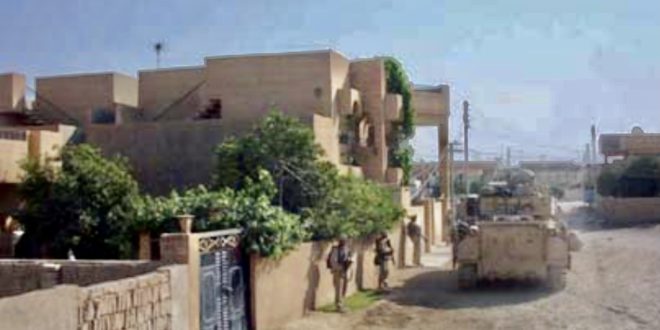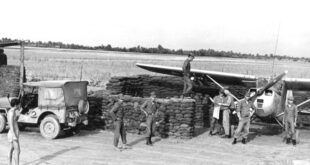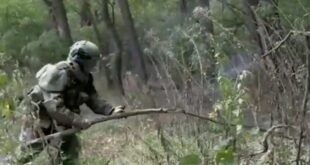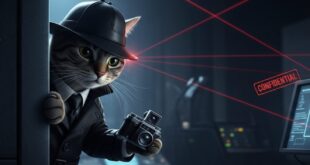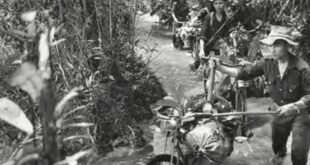The Manhunt
On 11 December 2003, troops of the 4th Infantry Division (Mechanized) literally unearthed Saddam Hussein, who had been cowering in a hole about the size of a refrigerator not far from his ancestral home of Tikrit. Within hours stunned audiences around the world witnessed the pathetic remnant of a dictator meekly submitting to dental examination and further processing by his captors. His successful apprehension capped one of the most thoughtful manhunts in history. For months Maj. Gen. Ray Odierno, commander of the 4th Infantry Division, and others had constructed elaborate matrices of colleagues, known associates, and relatives by apprehending one person who, when questioned, led them to another. Bit by bit, an intelligence picture was refined over time to bring the Americans ever closer to their elusive nemesis. Army.mil
The shock troops in this hunt for intelligence were soldiers such as those Captain Brown led. Given a name or address and generally accompanied by an informant or an interpreter, they would break into buildings during the dead of night, apprehend the adult males, and cart them off for questioning. Most, adjudged innocent or harmless, were returned to their families with apologies and recompense for physical damage done. A unit’s daily battle rhythm could include a midnight raid, payment negotiations for destruction wrought in earlier raids, tea with a newly rehabilitated returnee following incarceration, and logistical support to local schools. By December coalition forces averaged 1,690 patrols, 20 raids, and 108 anticoalition suspects captured per day. This carrot-and-stick approach was successful by at least one tangible measure: by the time Hussein was captured only 13 of the 55 Ba’athist leaders most sought after by the coalition were still at large.
The capture of Saddam Hussein coincided with an interphase in operations in Iraq. The restoration of the Hussein regime was now clearly impossible, and the morale of those seeking such an outcome correspondingly deflated. Coalition fatalities dropped from 105 in November to 48 in December, and reported daily attacks on U.S. troops had declined steadily from a high of 50 in September to 15 in December. U.S. troops were becoming more savvy, their uniformed Iraqi allies more numerous and perhaps more capable. In the summer U.S. soldiers had discovered only 10-15 percent of the ubiquitous improvised explosive devices before they exploded, whereas by December they were discovering as many as 75 percent in advance. Iraqi police climbed in number from the 9,000 who still stood
by their posts in May to 72,000 in December; whereas the Iraqi Civil Defense Corps, Border Patrol, and Facilities Protection Services climbed from nonexistence to 15,200, 12,900, and 65,200, respectively. The pace for restoration of the Iraqi Army itself was more disappointing, with as few as 400 soldiers considered available and capable by that time. Perhaps more important, a massive rehabilitation effort had cleared more than 16,000 kilometers (out of 20,000 kilometers) of irrigation canals and the supply of potable water had leaped from approximately 13 million liters before the war to over 21 million liters in November. These measures enormously improved the posture of the agricultural sector, with the so-called Marsh Arabs of southern Iraq being a particular beneficiary. The countryside never became much of a platform for resistance to coalition forces. Resistance increasingly centered in such urban areas as Baghdad, Samarra, and Fallujah, where unemployment exceeded 50 percent.
Not all the trends reported in the afterglow of the capture of Saddam Hussein were favorable. Urban unemployment remained disturbingly high. Oil production and electrical generation were improving much more slowly than hoped, in part because of the nagging persistence of theft, vandalism, and sabotage. Hussein loyalists might have been passing from the scene, but an inchoate neo-Ba’athist Sunni resistance remained. Mass casualty car bombings and suicide bombings, widely considered a hallmark of foreign or international terrorists, tripled from November to December; the resulting casualties rose from 198 to 287. Criminal violence remained high, and a simmering feud with Muqtada al-Sadr’s Mahdi militia remained unresolved. Perhaps most disturbing was the ability of anticoalition forces to replace losses. Since May the coalition had killed or captured an average of 1,000 suspected insurgents a month, with a spike of 3,000 in November. By December 10,000 losses had been inflicted on a resistance estimated at 5,000 active participants nationwide. For Captain Brown’s soldiers the capture of Saddam Hussein was a positive development that changed the nature and perhaps the capacity of their adversary. But it certainly did not end the continuing rigors of their operations in a war zone.
8 December: The registration of the tribe is complete. We have a checkpoint that the ICDC runs in conjunction with the police twenty-four hours a day … or at least when we are there. The fence has blocked off the feeding routes for all the livestock that live in the city, so we constantly have herders moving all their cattle through the serpentine checkpoint. Great picture. I wanted them to register the male cows. The police love our interviews of the baqara for their identification cards; unfortunately, I think sometimes the cattle understand me more than the cops do. The police had a difficult go at understanding the concept of the checkpoint; but the more police we threw in jail, the closer they got to perfecting their checkpoint operations. In Iraq, nothing works to break through to understanding like a little jail time. The sheiks are all in the slammer, so it makes my job much easier as far as the city council meetings are concerned. We are going to release them to the new Stryker Brigade when we head north for an operation.
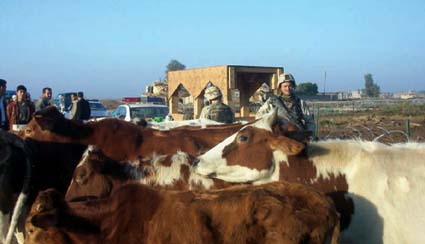
Cattle passing through our serpentine checkpoints at Abu Hishma
Samarra is a rough place where they are still fighting with a degree of organization-not as much as the press would assess, though. There are just a lot of bad dudes up there. I got some real heroes coming out of an engagement we had up there last week. Sergeant First Class Berg, my 1st Platoon sergeant, got blown up by an IED, took all kinds of shrapnel, and rejoined the fight … yeah, they awarded him a brigade coin and a Purple Heart. No one wants to admit how bad a town Samarra has become, so we go real cheap on the awards. Well, a lot of the bad guys are gone and the rest are intimidated … 120-mm. HE makes quite the statement. The town has gone south, and the CG has taken a keen interest in turning it around.
The next few weeks should prove interesting. We have a division operation coming soon, but no one is asking how to fight in the city. I saw an initial cut at a plan … they are planning in a vacuum. It is a corporal’s war. I learn how to fight the company from how the team leaders and squad leaders fight. It’s small-unit leadership at the focal point and then pile on the combat power. During the great Samarra shootout, my guys took over the rooftops, and the squad leaders assigned alleyways as sectors of responsibility and then picked off RPG/AK firers. Just like at our MOUT range. Unfortunately, not too many people understand that fight, and they think the MOUT fight is won through Civil Affairs projects. It’s really tough to rebuild a city under direct and indirect fire while the locals destroy and loot every project you start. It’s amazing that the enemy will fire mortars at you inside their own city. Fortunately, they missed us, but they destroyed all kinds of their own. Of course, they will blame the Americans, and we will give them all kinds of money, when we should just lay siege to Fallujah, Tikrit, and Samarra. No one in, no one out … clear everything, break the insurgents’ backs. It is all about isolation, and we know the major weapon hubs: Samarra and Fallujah. So bring the hammer down. Isolate and clear the entire town, bring in outside Iraqi police, and turn the city over to them-and we can go home. Let them figure out their own government.
Governments evolve just like creatures. When a society can have a democracy they eventually will, but it has to come about because they want it. We can’t force our way of life onto them. De Tocqueville laid it all out in Democracy in America: A definitive set of conditions exists at a particular time that will cause a community to organize itself in the most appropriate manner given its natural resources, quality of populace, and proclivity to defend itself. I don’t think we understand that those conditions do not exist everywhere … democracy does not work in mental institutions.
9 December: We were sitting around talking about contacts, and some of the guys from a different company, who have been here awhile, were saying they just wanted to make contact to see how they would react. I was quite incredulous … one, that they hadn’t been in contact and two, that they would want to. I guess I am beyond all that. At one point, I wanted to see if I “had it,” but now I know what happens and I explained it. The first thing is you get absolutely terrified because fighting is incredibly loud. Then you get really angry because someone is shooting at you, so you start shooting back. Then you get really confused as to where exactly the targets are and you start maneuvering forces to isolate and destroy the bad guys. After that, you leave and become really tired from all the adrenaline. Then you lie down and can’t sleep because you are nervous and worried from the engagement. So fear, anger, confusion, and weariness are the order of emotions … none of which have a positive connotation to them and all of which I could do without.
10 December: They brought us a bunch of mouse glue. The basic concept is to place a piece of food in the middle of a Styrofoam plate surrounded by a sea of glue. Mr. Jingles ventures forth to get the niblet of food and becomes stuck in the quagmire of sticky glue. He then starts squawking up a storm until you put him out of his misery. It works quite well for keeping the rodent population down. The other morning we heard a new, hissing sound on the trap. It turns out the mouse got stuck, and then Mr. Snake followed him onto the plate and got trapped in the glue. Classic scene as the snake just hisses and rears back on his haunches trying to get the mouse. He was furious with the glue. Staff Sergeant Guidry pushed the snake’s head down onto the plate, so Mr. Snake became a permanent fixture on the glue plate. I’m worried that one morning we might wake up to a kid stuck to the plate screaming. The days continue to roll by as we prepare for the division operation in Samarra. We are assigned the worst zone and are leading the division into the city-lead element for the main-effort battalion of the main-effort brigade of the main-effort division of the main-effort corps in Iraq. It’s funny because all of these division assets key off of the Bravo Company LD. I guess that is a vote of confidence for the company, although I have zero desire to go to Samarra in general and to Zone 7 in specific. We have already been involved in several shootouts in that zone-not a good place. We test-fired the weapons, conducted rehearsals, built the door breaches, cleaned weapons, back briefed, and re-back briefed. We have had lots of experience in the city and lots of training in urban operations. It is still extremely nerve-racking.

Outer cordon in Samarra
12 December:We got a tip on one of the shooters from Abu Hishma … game on. I gave guidance to our newly attached engineers on a demolitions breach to go into the house. I had to link up with them at Checkpoint Six. I checked on the charge … more C4 than I had expected … five pounds. We talked about the initiation system and the standoff required for about thirty seconds and then moved into the city. Outstanding movement techniques and the guys looked great.
They just reported capturing Saddam Hussein five miles up the road from me next to a place I lived at for a month. Sweet! Now maybe I don’t have to go to Zone 7. We had members of the Stryker Brigade consisting of a bunch of ex-Rangers. I ran forward with the breach team, inspected the site, and gave the go-ahead as the gate was set back from the wall providing us with cover. We pulled out thirty feet of shock tube, looked down the line at Lieutenant Colonel Sassaman and the Strykers and said this is going to be loud…. Kawoom! We were covered in the dust cloud and cordite. The lead squad rushed by me and the engineers. Awesome sight. We should have filmed it. I followed the platoon leader in, and we hit the house hard. The bad guys just freaked out and lay there. Every window in the house was shattered. Hard demolition breaches in MOUT. Nothing quite like it exists. I moved back to the breach site and looked for the large iron gate. I found where it was attached on one side, but the gate and wall were gone. Okay, we went a little heavy on the C4, but it definitely made a statement. It had to be the coolest raid I have done. We got half the shooters, which is outstanding for these types of actions. The Bradleys moved forward to establish an outer cordon; we policed up six prisoners, passed them off to the fighting TAC, and left. The lieutenant colonel called me on the radio as we drove away.
“What was that?”
“Brazier breach tamped, sir.”
“That was really loud.”
“Was it too much?”
“No, that’s exactly what I wanted.”
“Yeah, it’s designed to go through a wall, but apparently it works on gates pretty well.”
Yeah, gates and any glass in a 500-mile radius.”
Well, the Strykers liked it.
14 December:So I am sitting in line waiting to use one of the five porta-johns we have for the 900 soldiers of Task Force EAGLE up here in Samarra, when the brigade commander comes up.
“Hey Todd, I have a question for you on your eighteen targets in Samarra.”
“Shoot, sir.”
“How many are you planning on knocking on the door, and how many are you planning on kicking in the door?”
I thought he was setting me up. I have been to well over 500 houses and have never knocked on the door. That’s a great way to get shot. I am squirming, trying to figure out how to answer this one as I look over to all the engineers building our fifty-plus door and wall demolition breach charges. Wow, I didn’t realize the disparity of views on raids in Samarra. I think you have to go in hard or else you accept a huge risk for our soldiers … I am not willing to have one of my guys walk up to a door, knock on it, and ask suspected terrorists to come outside. That is crazy! I guess Lieutenant Colonel Sassaman and Colonel Rudesheim haven’t been talking about these things. Well, I’m not knocking on any doors; that’s how that battalion commander of the 101st was shot and killed. Don’t send me to the house if you don’t expect me to breach, and demolition breaches are much less intrusive than Bradley breaches-trust me, I’ve done both.
“Well, how have you been entering the houses in Abu Hishma?”
“Uh, we have been kicking in the doors … or following five pounds of C4.“
I linked up with Sassaman and told him about the conversation. I accused him of setting me up for a face shot. The plan remains demolition breaches tonight, but the two colonels definitely need to talk.
23 December:We had a two-day delay in offensive operations due to the capture of Saddam. Of course, we could not just delay for two days, so they sent us into the city to tip our hands for a big upcoming operation. I
got punked on the patrol matrix, and we ended up patrolling at night in the freezing rain. One of the tracks died at 0200 when we were coming back to the FOB. Dropping prop shafts on a bridge in the cold rain … rough. Charlie Company did manage to catch Kai Sadam-one of the big financiers of the region, and they dragged in seventy-three other guys who were hanging out with him around Isaki. Charlie Company is an area weapon: send them to get one guy and they bring you seventy-three. Good mission, and hopefully that will improve conditions along Route 1. I really think that the gangsters are mad at us out there because we keep interfering with their truck-heisting operations. We can’t want a better life for them; they have to want it for themselves.
The operation is a go, and we are all ready. Hit time is 0200. No one can get any sleep as we check and recheck weapons and plans. Hopefully, the intelligence doesn’t lead us on a wild goose chase. We roll south of the city and stage at the old FOB STODDARD. On call we move into the city, queuing the division operation. My first target is on Mosque Road in the absolute worst section of town. We are surrounded by six-story buildings that offer easy top-down shots on the Bradleys. It’s nerve-racking, and the intelligence leads us to an apartment complex that would take twenty-four hours to clear.
“Bag that target. Let’s move onto 281,” I tell Blue Platoon.
“Roger sir, we are moving south at this time.”
Everyone is pretty keyed up and nervous as we move down the alleyways.
“Six. This is Five. Red has HVT 111,” comes across the radio.
“Roger, good job.” Already more successful than I would have initially guessed.
We move south across the street and identify the house. The breach team comes forward. We use tamped tent peg charges to minimize the amount of damage and demolitions required. The team places the charge, and I get the press back behind cover. Staff Sergeant Moyer initiates the charge … Piff. It sounds like a loud match.
“Sh-, bad M81 initiation system, sir.”
Okay, go again.”
Piff. “Let’s go in manually.”
“Wait one.”
Kaboom. The gate swings open and the platoon flows in through the breach. We let them get the foothold and then head into the courtyard-these missions look awesome. They bring all the people out of the house … no males. I have an interpreter this time, but I can’t stop speaking pigeon Arabic. It’s pretty funny. All the males are in Mosul. Very strange. We search the elegant (by Iraqi standards) house and find it’s clear. Okay, get a picture and move on. The press loves the demolitions breaches … great “bad” story. We head south down the back alleyways, and the guys are moving well. We get to target S0045 and prep the gate. The background explosions from Alpha Company and my other platoons make us all a little jumpy. We figured out the M81 seals aren’t connecting with the shock tube because the wax melted the connection point closed sometime this past summer. That’s good to know and easily fixable. We run down a trash-strewn, muddy alley whose stench causes you to question just exactly what you stepped in. It’s layered with that dark, slippery, bubbly, oozy mud characteristic of open sewer systems … maybe that’s why it stinks so bad. We move stealthily to the door and set the charge.
Kaboom. The gate flies open.
“Hey sir, we got two locked steel doors.”
“Roger, go ahead and breach. Make sure everyone’s behind good cover.”
KABOOM. The overhang of the balcony caused a much louder explosion since the energy from the charge had nowhere to go. The house got rocked. We move in and nab the males, who lead us on a Jerry Springer chase after more bad neighbors. Oh well, I am not going anywhere for awhile. We police up those guys and load them into the XO’s trailer. It’s our trailer caged up and dragged behind the XO in which we load all the prisoners. It is not a real fun ride, and normally when they shoot RPGs at us they go behind the track. We have made countless jokes about the XO being on CNN dragging
a burning trailer loaded with detainees behind his track. After that house, I hopped in the back of one of Blue’s tracks and they drove me across town to Red’s houses and the other tracks. I got onto my track to get a better picture of the other platoon’s actions as the early morning wore on. We had our backs to the giant water tower, and you just couldn’t help but envision someone launching something at you from 300 feet up.
Red finished their actions, and we uploaded the detainees and headed north of the minaret traffic circle to stage for Operation INDUSTRIAL CLEAN UP, part two. We passed off the detainees to the CMOC, and Jimmy breathed a sigh of relief with regard to his potential “trailer” infamy. We waited on Charlie Company to set the outer cordon and then moved down to commence lock-breaking and seemingly hooligan actions to clear the area of caches. This is the area from which we carted out five flat racks’ worth of weapons and ammunition … more than a light infantry battalion’s MTOE. I don’t think the press really understood what we are doing, and the caches we find really don’t support the operation … a couple of RPG launchers and rounds and about twenty AK-47s and other small arms. Not as fruitful as we hoped, but we got seven more RPGs off the street. The town proved quiet with a siege mentality, and we continued with a 24/7 presence throughout the area.
The next morning we drove around with one of the informants and a mistaken detainee on a series of raids made famous by Nick Robertson and CNN.

Minaret at Samarra, aka OP Insurgent. Spotters used this tower to communicate our
movements and adjust fire accordingly until we prevented them from climbing it
We ended up getting three more bad guys for the THT teams to work with and thirty minutes of fame. I am sure I will get counseled about being a poster boy for political incorrectness. I guess the CG had a meeting with the battalion commanders and told Colonel Rudesheim he was getting an A+ for his dealings with the press but that Lieutenant Colonel Sassaman was getting a low C. “Hey sir, a C is passing,” Sassaman told him-I guess the CG loved it.
Oh well, I am comfortable with retiring as a captain. What are you going to do, send me to Iraq? I think it’s important to tell the right story and not some fantasy. The funny thing is pretty much everyone operating in the city, including the Iraqis themselves, agrees with what I say. The mayor of Balad gave a class to Sassaman on how to work in Samarra. However, nontyrannical societies don’t really condone the mayor’s methods. The town has calmed down significantly since we dropped the hammer, and the people are starting to wave and smile at us. Our interactions have drastically improved since we introduced them to the smackdown, and they seem to love us now. I think they really just want someone to restore peace and demonstrate authority. The Stryker Brigade continues to cut its teeth over on the east side of the city. They had their series of rookie mistakes and left some AT-4s lying around. Fortunately, my cash-for-weapons program came into full swing, and we recovered them for $40.
I have initiated a repatriation program for detainees who have served their time. We take them down to the family and read them the riot act prior to sitting down to tea and a pleasant conversation. I have quite a rapport with the seventy-year-old fat Iraqi women in the region-they love “Bono Brown.” It’s part of my win-the-hearts-and-minds campaign. It also helps me with my raids. I can go down and tell the family to have the guy show up at the CMOC within forty-eight hours, and he does. I have to threaten them with an exaggerated amount of violence, but that’s part of the culture. We have gotten several guys that way. Now if I could just get Alpha Company to stop harassing my informants and to start using proper charges, we would be good. I guess they used an improper charge and killed a guy; I told them what charge to use.
We ran over some wire at one of the traffic circles going into the city, and we stopped while two of the tracks cut the wire out of their road wheels. I had my guys set up a hasty checkpoint with the THT teams watching the guys we pull out of the cars. Bingo, we nab one of the head financiers of the cells
operating in Samarra. Sweet deal. He was en route to Syria with $1,400 in cash and a bunch of fake 10,000-dinar notes. That is a bit of money for these parts. We police ol’ boy up and move into the city for some more raids and questioning. Standard day in Samarra. We pay off one of the houses that we damaged during a breach and conduct a repatriation operation. Everyone in the house just starts crying and reciting the “Mister, I love you” routine. The ADC-M [assistant division commander for maneuver] and brigade commander show up, and we walk them right down Mosque Road through all our contacts. Way too many people walking down one street, especially this one. I always make my guys move as if they are under contact on this street. We finished that patrol, did some test-firing of the Brads, and hung out. The city is much better now than the past two months. It’s quite amazing.
24 December: Christmas Eve day proved tragic as a convoy from the 5th Engineers got smoked by an IED. They share the warehouse next to ours. They were heading south on Route 1 in three soft-skin Humvees when they got hit by a 155-mm. shell in a trashcan full of .5-inch-diameter ball bearings. They didn’t stand a chance-killed their battalion S-3 and two others immediately. Charlie Company had to secure the site and medevac. It just pisses you off. No wonder guys have zero love lost when dealing with the Iraqis. They also got some ICDC guys and U.S. contractors, who showed up in our bay all shot up. We got the scoop on the action from them and then tried to hunt down the drive-by artists … no luck. Five contacts on Christmas Eve on our stretch of road. Those guys out there in the soft-skin Humvees and white Suburbans are just asking for trouble. You either go covert or overt with lots of combat power, and then when you make contact you just unleash an incredible amount of firepower and detain everyone because they all know something.
We had gate guard duty that night, and my guys had been passing off security of one of the dead Iraqis from shift to shift. About 0200 Sergeant Hays calls up, “Yeah, we still have a dead guy here at the front gate.” Battalion came back that they would handle it, so we just let it go. Sassaman and a bunch of the TOC guys went out there to get the body, but the guy was really big and stiff. It turned into a Weekend at Bernie’s-type event as they tried to fit this 250-pound rigor mortis corpse into an SUV. They kept trying to bend parts to fit him in, but they couldn’t find the dude’s knees once they put him in the body bag and he kept falling out. Sassaman kept referencing the swing set he had to assemble on Christmas a few years back as being much harder than fitting the corpse into the car. It was one of those surreal comical scenarios
where the guys involved are asking what are we doing with this dead guy on Christmas morning, but it’s not really funny and it’s not really Christmas.
26 December: Christmas was actually pretty fun. We had a battalion candlelight service and sang Christmas carols … with the interpreters. I don’t know if they got the whole deal. We had pork chops for dinner … cultural awareness. The meal proved outstanding, and they came up with some pretty funny Iraqi adaptations of the twelve days of Christmas.
The eight-hour patrols in the city continue to drag by. Especially at night-you just sit out there if you don’t have any raid information. Fortunately, “Doctor” Alex Williams, the S-2, has pushed us a lot of targets, probably more than our fair share. We roll around with detainees-turned-informants with bags over their heads to conceal their identity. They drag us on some wild goose chases because they will give you any sort of information to get out of the pen. Apparently, they don’t appreciate the lifestyle and psychological games. Or maybe they do, and that is why they give us all these targets. Regardless, we roll around the city policing up more targets. I used to feel guilty about the Clockwork Orange/Orwellian role America plays here in Iraq, but a populace that doesn’t want to find peace or prosperity forces us into it. They want to thrive on vice and graft, so we bash in their houses and imprison them in order to force them to accept self-government and freedom of choice. Does anyone find this ironic? I know the intellectuals will all say
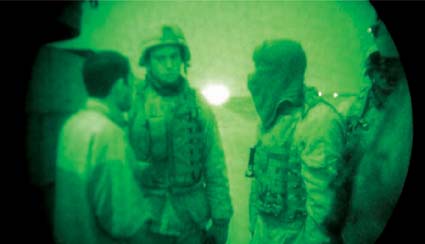
Discussion with an informant on a nighttime raid. Toward the end we wouldn’t do raids un-
less we had talked to the informant ourselves, and most of the time we brought him along.
that it’s a hearts and minds campaign and come up with all kinds of grandiose solutions to our situation in Iraq. From where I sit, none of that will work. You have to establish authority and gap the insurgency [separate insurgents from the population]. Prove that you are in charge-not by money but by action. You have to run the city.
31 December: “Yo Cunningham, where you going?” I ask my five-foot-two-inch driver who has never left his hatch outside the wire.
“Sir, I can’t take it no more,” Cunningham says as he walks behind the destroyed building at FOB DANIELS … toilet paper in hand.
“Man, this is the first time you have ever left that hatch.”
“You know it, Sir.”
“Hey Sergeant Cummins, throw me an MRE,” I yell up to my gunner as the platoon leaders move over for a quick planning session.
“No way, man. I can’t do another chicken breast. Give me something better,” I protest.
“Here’s a spaghetti.” He tosses it down-violating the you-get-what-you-grab rule.
Boom! sounds off in the distance. “Did you hear that?” I nervously ask.”Yeah, let’s move into the busted-up building.
“KABOOOMMM.
“Oh sh-, that was really, really loud. Let’s get back on the tracks-we have incoming!”
Boom!
I hear the launch as I attempt to mount the Bradley with all my gear on over the cumbersome reactive armor. Great, we got rounds in the air and I am attempting to pirouette onto the front slope. I clumsily hop into my hatch.
KABOOOMMM.
“What the hell is that? They aren’t mortars-or else they have the giant siege train mortar,” I think to myself.
“Get 100 percent accountability and start driving south to the soccer field where they have launched mortars before,” I command over the net.
“Cunningham, let’s go!” There is a pause.
“Cunningham, let’s go!” No answer. I see this little fella running back toward the track under my NODs, just cursing up a storm. He jumps from the ground into his seat, and I start laughing as I realize his predicament. He cranks up the track and heads into the city.
“Hey Cunningham, I bet you won’t ever get out of the track again.”
“Hell naw, I am going to keep a garbage bag up here now. What the hell is that?” he replies in a funny, breathless panic.
“I don’t know just yet.”
The gunner and I start laughing as battalion gets the Q36 radar grid and calls it down. I plot it on the computer and realize it’s seven-and-a-half kilometers away. I clear indirect and simultaneously figure out it ain’t 82-mm. mortars we’re after. Higher denies counterfire … big surprise … shoot the guns-it’s farmland out there. Maybe I take it too personally when they shoot at us. We move to the grid and start firing illumination and searching for clues. The bad guys have long since disappeared, but we can always hope to find their cache. We get to the grid and search around with two platoons while I send one on a “meet the locals of the area” patrol. The 1st Platoon grabs some guys who say they heard nothing “Yeah, right, a-hole.”
“Okay, you have ten seconds to start telling me the truth or I will ram this tank into your living room.”
“Oh yes, we heard two explosions.”
“Where?”
“Mister, I don’t know.”
“Okay, the satellite showed me that it fired from around here. That same satellite will send a ray down here to melt your house to the ground unless you take me to the exact spot you heard them fire.”
“Mister, come in my car, I show you the canyon.”
Now we are talking. We follow this guy toward the canyon that my Blue Platoon was already searching.
“Hey sir, we got the sight,” Ben Tumlinson calls over the radio.
“Sweet, what is it?”
“Rockets.”
“Great … now they are lobbing these trashcan rockets at us.”
We get on the ground and take a look at the dud rockets. It’s crazy. They just lay these rockets against a berm, aim them with a compass, and launch them with a det cord fuse. Totally inaccurate, but totally loud and terrifying.
We blast the rockets with 25 HE until they catch on fire, and then move
back to FOB Brassfield MORA. Just when you thought things were getting better!
 Soldier of Fortune Magazine The Journal of Professional Adventurers
Soldier of Fortune Magazine The Journal of Professional Adventurers


